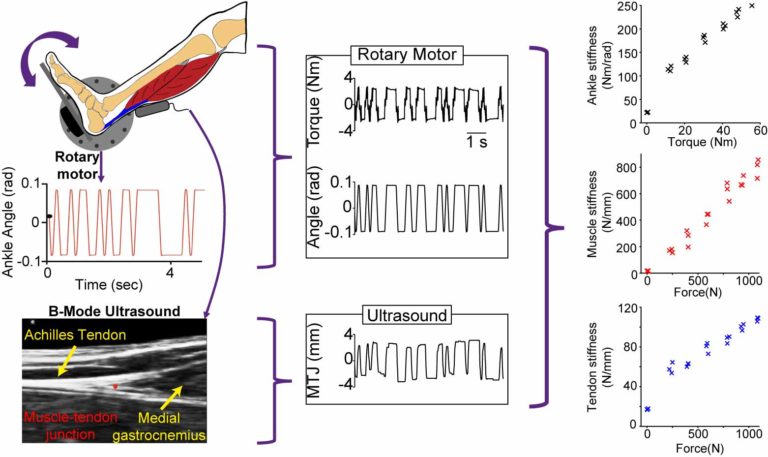Our ability to continuously regulate the mechanical properties of our ankles underlies our ability to locomote effortlessly over varying terrains. Ankle impedance, a quantitative measure of mechanical properties, is dictated in the sagittal plane predominantly by the impedance of the triceps surae and Achilles tendon. However, the relative contributions of these structures are largely unknown. Identifying how muscle and tendon contribute to ankle impedance is essential for advancing our understanding of how these anatomical structures contribute to the control of posture and movement, and for developing targeted interventions when the ability to regulate ankle impedance is impaired by injury or aging. The current gap in knowledge stems from a lack of in vivo measurement techniques that can quantify how the muscle and tendon contribute to joint impedance. Hence, we developed a method to quantify joint, muscle, and tendon impedance simultaneously, and evaluated it at the human ankle.
Our technique combines two commonly used methods, system identification and B-mode ultrasound imaging. We used a robotic device to pseudorandomly perturb the ankle, while measuring the corresponding joint torque and displacement of the medial gastrocnemius muscle-tendon junction. Using the experimental measures of ankle angle, ankle torque, and muscle-tendon junction displacement in a non-parametric system identification analysis, we estimate ankle, triceps surae, and Achilles tendon impedance simultaneously.
We validated our estimates of muscle and tendon stiffness—the position-dependent component of impedance—by comparing them to previously reported measures. We demonstrate that our novel measurement technique generates reliable estimates of both properties. Our methodology creates new opportunities to explore the underlying contributions from muscle and tendon impedance in the control of posture and movement. Additionally, it provides a technique capable of identifying the source of impairment when ankle impedance is altered as a result of aging, injury, or pathology.

